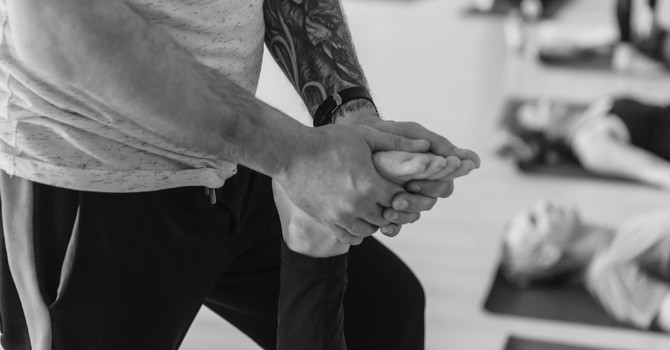Dan Swinscoe, Physical Thearpist (Peak Sport & Spine Therapy) DVRT Master

Golf is a great game. A game that can be played for a lifetime. It can be competitive between men and woman, or between beginners and experts. A game that you can even play while drinking beer. There’s a lot to like about golf but it can be a challenge to improve. Golfers are always looking for that secret to getting better. Turns out the secret might just be in your mirror.

If we can agree that it’s your body that swings the club then we should also be able to agree that your body has much to do with your golf game. Improve your movement, improve your game. New sticks can be fun but we both know if a professional player uses your clubs the results will be different. It’s not the club as much as the person swinging it. That said, how do you know what you need?
Fortunately, our friends at the Titleist Performance Institute (TPI) have us covered. TPI has studied the human body as it relates to golf in a very scientific way for over 15 years now. Through their research it was found that all golfers need to be successful at certain movements in order to have a powerful and repeatable golf swing where the ball flies in a predictable way. We like that.
One of the movement skills needed for golf that most amateurs don’t do well is separating the hips and shoulders. Initially referred to as the “X-factor” by Jim McLean, it refers to the relationship between your hips and shoulders as you turn the body to swing the club. It makes the most sense if you imagine looking down on a golfer from above with an imaginary line across the hips and another across the shoulders. These lines are parallel when you address the ball but as you begin your back swing, the more your shoulders are able to keep turning after your hips stop, the greater the angle between those two lines and it looks like the letter “X.” Research shows that the larger the X factor at the top of the back swing the longer the distance of the shot. Think of it as stretching your body’s rubber bands so you can then let them go and enjoy all that elastic energy.
If you read this blog you’ve heard before our DVRT Master Trainers talk about “oblique slings” or the “connection between hips and shoulders” or “the lat and the glute.” This is the X-Factor ! Helping your body generate and control power from shoulders to hips and vice versa is a common theme in the exercises you’ve learned using the Ultimate Sandbag because that’s how the body actually works. For golf and for everything else.
According to research performed at TPI the three most common swing faults are: Loss of posture, early extension and casting or early release of the club. Loss of posture implies the person essentially stands up during the back swing. Early extension refers to a movement of the golfers’ body towards the ball during the downswing. Casting or early release is when the person loses the normal wrist angle prematurely during the downswing. A common denominator with all of these swing faults is a lack of effective separation or control between hips and shoulders. If you don’t control the relationship between hips and shoulders you wont have power or control over ball flight.
Below are three terrific exercises that can be useful whether today was your first day on the course or if you’re already paid to play. First is the lift/chop diagonal pattern. Notice it is in half kneeling but can be made easier if you lay down into a bridge position or made harder if you “hover” in a split stance or even come up to a single leg.
Another option is to use the max lunge.
Rotational press is another unique exercise to the Ultimate Sandbag that is great for training the relationship between hips and shoulders as needed for golf and other rotational sports. Notice how you can fairly easily make it easier or harder.
Once you learn how to use the sandbag you’ll be able to follow along with my explanations and examples to make the exercises a little easier or harder as needed.
Enjoy your training and enjoy your game. Hope to see you out there




